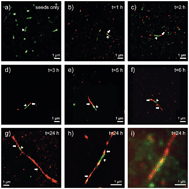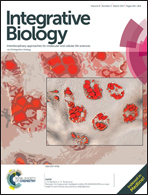Super-resolution imaging of alpha-synuclein polymorphisms and their potential role in neurodegeneration
Abstract
The conversion of soluble, functional proteins into amyloid fibrils has been linked to the development of neurodegenerative disorders, including Parkinson's and Alzheimer's disease. In the brains of patients with these disorders, the increasing presence of amyloid-containing plaques corresponds to neuronal cell death and the worsening of symptoms. However, protein amyloids are not merely confined to dying cells. Rather, some show a propensity to be transmitted to, and enter adjacent cells and induce the polymerization of the native monomer population. Whether this process is directly associated with toxicity or not is still highly debated. In this mini review, we will discuss structural polymorphisms of α-synuclein, as determined by super-resolution imaging techniques, and how these may be related to neuronal toxicity.

- This article is part of the themed collection: Integrative Biology Recent Review Articles


 Please wait while we load your content...
Please wait while we load your content...